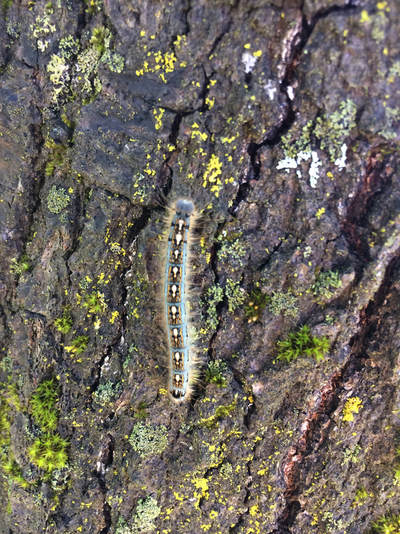|
August is National Forest Pest Awareness Month - what a great time to educate ourselves about what pests are impacting Antrim County’s trees.
The Emerald Ash Borer was detrimental to Ash trees over the past decade or so. With an estimated <5% of living Ash trees left in the County, these dead/dying trees now pose serious hazards to hikers, roadside power lines, and even your roof. Be proactive and have these trees removed before they cause damage. Now, let’s look at some forest pests that are currently in Antrim County: Beech Bark Disease, targeting Beech trees, is caused by both a sap-feeding scale insect and a fungus. As the scale feeds, the fungus is introduced and kills the wood, blocking the flow of sap. Diseased Beech trees are characterized by white patchiness; these trees decline in health and eventually die. Some infected trees break off in heavy winds before dying – a condition called "beech snap". What can you do? Watch for signs of beach bark disease, report your findings, have infected trees removed, and keep an eye out for resistant trees. Forest Tent Caterpillars are another pesky forest pest that are on the rise. The caterpillar outbreaks occur every 10-15 years, impacting Northern Hardwood forests – noticeably in the Eastern part of Antrim County. These forest pests alone are not likely to cause fatality. However, in combination with other stressors (i.e. late spring frost, lack of water, etc.) a tree may be stressed until the point of no recovery. Notice these pesky caterpillars in your backyard? Ensure your tree receives ample water during the growing season. The weather plays an obvious role in the growth and behavior of trees, which may show similar symptoms as forest pests such as early leaf drop or yellowing. This past abnormal winter combined with recent heat waves have wreaked havoc on local trees. Many of the Douglas Firs throughout the region have experienced “winter burn”- a browning on the tips of evergreen foliage. Winter burn is attributed to a lack of water, where the winter sun and wind dry out the needles. However, it’s important to note that impacted evergreen trees may very well be alive but have suffered great damage. Not all is lost. Keep in mind our forests are dynamic and ever-changing! The forests continue to evolve with each pest epidemic – wildlife and understory plant species benefit from declining trees and canopy openings. Knowing symptoms of decline can help prevent the spread of forest pests and diseases. Are you an Antrim County landowner concerned about a tree on your property? Call our District Forester to schedule a tree health assessment free of charge to you!
0 Comments
|




 RSS Feed
RSS Feed